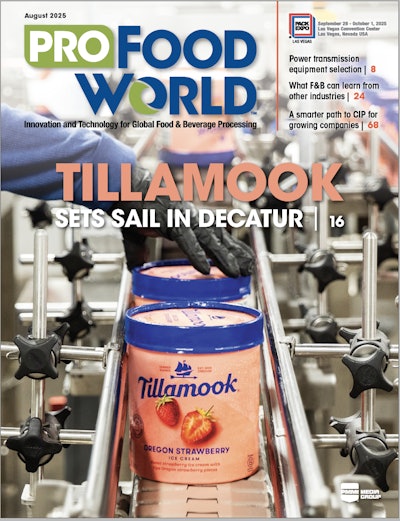The company is in the process of rolling out its Eco-Choice™ platform of customizable wet wipe products in innovative, sustainable containers for retail, medical, and industrial customers. Eco-Choice is designed to create sustainable wet wipes by reducing the hydrocarbon footprint of traditional wet wipe design, manufacturing, and packaging.
"Once we have consumer acceptance with the retail wipes, the industrial and medical fields tend to follow," explains Jon Alexander, the company's president and CEO.
As the photo accompanying this article shows, wet wipes are sold in a variety of flexible and rigid package configurations. Confidentiality agreements prevent Guy & O'Neill from discussing customer names or divulging material specifications, but they do say the wipes are packaged on any of eight lines at the company's plant in Fredonia.
Most of us are familiar with wipes used to clean our hands, to clean surfaces in our homes, or to clean baby bottoms. The following list demonstrates some of the ways wipes may be used for medical applications, each of which is likely to incorporate different wipe materials and formulations:
• Wet wipes for individual bathing kits used in hospital, nursing home, or home care settings. These can be warmed in the microwave, heater ovens, or even self-heating technology that warms the wipes to a comfortable temperature, with each pack containing multiple wipes designed for cleaning specific areas of the body, thus preventing bacterial cross-contamination.
Guy & O'Neill packages these in a peelable, resealable flexible pouch. "Hospital staff members love them because they eliminate the washtub baths, where you used the same towel or rag on the person's entire body. This helps to reduce their issues with safety, labor time, and bathing costs," says Alexander. The same type of wipe material is used within a bathing cap to wash a patient's hair. Instead of in a bath, shower, or sink, a tear-open pack can be warmed and includes shampoo and conditioner. It is then discarded after a single use.
• Wipes used in intensive care units. "You don't want to be bringing staph, MRSA, and other bacterial and viral pathogens into contact with patients," says Alexander. "There are people who are going through chemotherapy and other medical conditions who are really sick. Their immune systems are down."
• Wipes as an alternative to hand gels. "The hand sanitizers have become a key health issue in the hospitals," Alexander says. "The difference between wipes and hand gels is that hand gels just sanitize, whereas hand wipes first clean and then sanitize your hands, removing the bacterial and other unwanted contaminants.
• Sterilized, zippered surface alcohol wipes for use in the operating room. "We are in the process of developing these medical products with Eco-Choice wipe materials, formulations, and packaging," says Alexander. "We have products with full Environmental Protection Agency approval and Food & Drug Administration letters of nonobjection to the materials used in the packaging of the products we use in our medical applications, where we typically sell through distributors."
Pharmaceutical applications, too
Alexander explains that wet wipes are also used in the pharmaceutical arena. "Drug manufacturing companies are offering the same type of products under their own private labels," he says. "Wipes serve as drug delivery systems." How so?
"Here are the drug facts on the box," he says, pointing to an acne-pad wipe package sold by a pharmaceutical firm. "This is a drug delivery system. These are acne pads similar to those that you might use to remove or eliminate makeup, but they also include a liquid formulation with an active ingredient to treat acne. Since it's making a medical claim that the product will help eliminate blackheads and prevent new ones, the package has to include drug facts, so this is an FDA item.
"The FDA has inspectors visit our facility every year, checking our records and making sure we are following cGMP's and validating our procedures." [HCP]
--By Jim Butschli, Editor
"Once we have consumer acceptance with the retail wipes, the industrial and medical fields tend to follow," explains Jon Alexander, the company's president and CEO.
As the photo accompanying this article shows, wet wipes are sold in a variety of flexible and rigid package configurations. Confidentiality agreements prevent Guy & O'Neill from discussing customer names or divulging material specifications, but they do say the wipes are packaged on any of eight lines at the company's plant in Fredonia.
Most of us are familiar with wipes used to clean our hands, to clean surfaces in our homes, or to clean baby bottoms. The following list demonstrates some of the ways wipes may be used for medical applications, each of which is likely to incorporate different wipe materials and formulations:
• Wet wipes for individual bathing kits used in hospital, nursing home, or home care settings. These can be warmed in the microwave, heater ovens, or even self-heating technology that warms the wipes to a comfortable temperature, with each pack containing multiple wipes designed for cleaning specific areas of the body, thus preventing bacterial cross-contamination.
Guy & O'Neill packages these in a peelable, resealable flexible pouch. "Hospital staff members love them because they eliminate the washtub baths, where you used the same towel or rag on the person's entire body. This helps to reduce their issues with safety, labor time, and bathing costs," says Alexander. The same type of wipe material is used within a bathing cap to wash a patient's hair. Instead of in a bath, shower, or sink, a tear-open pack can be warmed and includes shampoo and conditioner. It is then discarded after a single use.
• Wipes used in intensive care units. "You don't want to be bringing staph, MRSA, and other bacterial and viral pathogens into contact with patients," says Alexander. "There are people who are going through chemotherapy and other medical conditions who are really sick. Their immune systems are down."
• Wipes as an alternative to hand gels. "The hand sanitizers have become a key health issue in the hospitals," Alexander says. "The difference between wipes and hand gels is that hand gels just sanitize, whereas hand wipes first clean and then sanitize your hands, removing the bacterial and other unwanted contaminants.
• Sterilized, zippered surface alcohol wipes for use in the operating room. "We are in the process of developing these medical products with Eco-Choice wipe materials, formulations, and packaging," says Alexander. "We have products with full Environmental Protection Agency approval and Food & Drug Administration letters of nonobjection to the materials used in the packaging of the products we use in our medical applications, where we typically sell through distributors."
Pharmaceutical applications, too
Alexander explains that wet wipes are also used in the pharmaceutical arena. "Drug manufacturing companies are offering the same type of products under their own private labels," he says. "Wipes serve as drug delivery systems." How so?
"Here are the drug facts on the box," he says, pointing to an acne-pad wipe package sold by a pharmaceutical firm. "This is a drug delivery system. These are acne pads similar to those that you might use to remove or eliminate makeup, but they also include a liquid formulation with an active ingredient to treat acne. Since it's making a medical claim that the product will help eliminate blackheads and prevent new ones, the package has to include drug facts, so this is an FDA item.
"The FDA has inspectors visit our facility every year, checking our records and making sure we are following cGMP's and validating our procedures." [HCP]
--By Jim Butschli, Editor


















